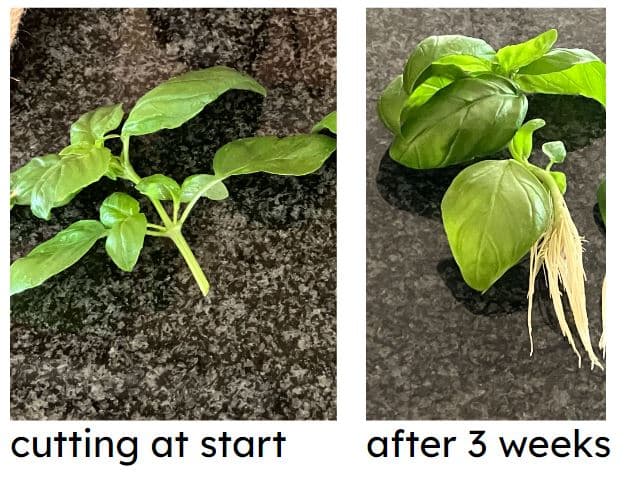Starter quiz
 Match the part of the plant to its name.
Match the part of the plant to its name.- A⇔flower ✓
- B⇔stem ✓
- C⇔leaf ✓
- D⇔roots ✓
 Andeep has recorded some information below. What has he created?
Andeep has recorded some information below. What has he created?- a table ✓
- a graph
- a flow chart
- a classification key
-
- Which part of a plant anchors it in the soil and absorbs water and nutrients?
- 'roots' ✓
 Plants can create offspring in different ways. What are offspring?
Plants can create offspring in different ways. What are offspring?- the food plants need that has been made inside its leaves
- the young of a living thing that have been made through reproduction ✓
- the habitat that living things grow, reproduce and live in
-
 What do we call a plant that has reproduced and created offspring?
What do we call a plant that has reproduced and created offspring?- parent plant ✓
- flowering plant
- houseplant
-
- What do we do when we record information?
- read it so we can understand it
- research it online so we can learn more
- keep it so it can be passed on to others ✓
-
Exit quiz
 Aisha has taken a cutting from a basil plant and taken photos at the start and after three weeks. How has her cutting changed?
Aisha has taken a cutting from a basil plant and taken photos at the start and after three weeks. How has her cutting changed?- It has grown roots. ✓
- It has died.
- It has been pollinated.
- It has formed seeds.
-
- Plants ______ to make new plants, or offspring, in different ways.
- 'reproduce' ✓
 We can find out more about how plants grow from cuttings by …
We can find out more about how plants grow from cuttings by …- carrying out a survey.
- identifying and classifying seeds.
- observing them over time. ✓
- collecting photographs of flowers.
-
 Which of these would not be a good way to record how a plant has grown over time from a cutting?
Which of these would not be a good way to record how a plant has grown over time from a cutting?- a table showing the number of leaves and roots at different times
- a photograph of the parent plant before taking a cutting ✓
- a labelled diagram of the cutting at the start and after three weeks
- a written explanation of how the plant changed each week
-
 Sofia has taken a cutting from a mint plant and recorded her observations over time in a table. Which statement about her cutting is incorrect?
Sofia has taken a cutting from a mint plant and recorded her observations over time in a table. Which statement about her cutting is incorrect?- The cutting has grown taller. ✓
- The cutting has grown more leaves.
- The cutting has grown more roots.
-
- Growing new plants using cuttings is an example of …
- reproduction with pollination.
- reproduction with fertilisation.
- sexual reproduction.
- asexual reproduction. ✓
-
Worksheet
Loading worksheet ...
Presentation
Loading presentation ...
Video
Lesson Details
Key learning points
- Plants reproduce to make new plants, or offspring, in different ways.
- Plants that have been grown from cuttings can be observed changing over time.
- Observations can be recorded in different ways, including annotated photographs, diagrams and tables.
Common misconception
Pupils may think that observations from enquiries should only be in written or numerical form.
Explain that there are many ways to represent the information we gathered during enquiries, including with diagrams, writing or even video recordings.
Keywords
Offspring - Living things create offspring when they reproduce.
Reproduce - When living things reproduce they create offspring.
Parent plant - A parent plant is a plant that has reproduced and created offspring.
Observation - We make observations when we look closely at something and use other senses too.
Record - To record information is to keep it so that it can be passed on to others. This can be done in many ways including notes, photos and drawings.
+